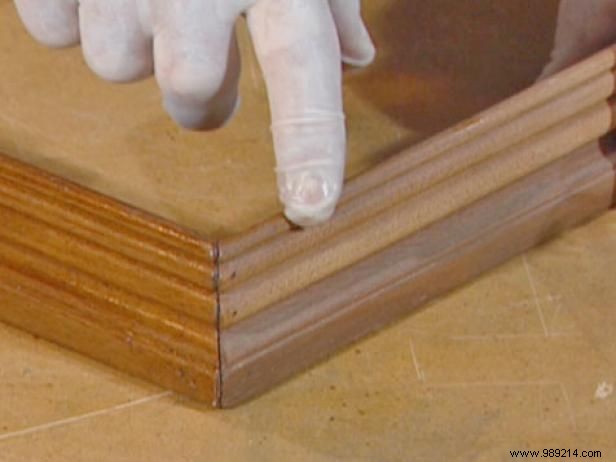
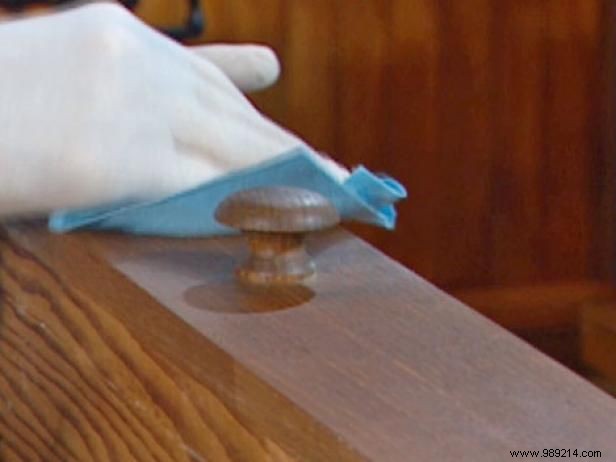
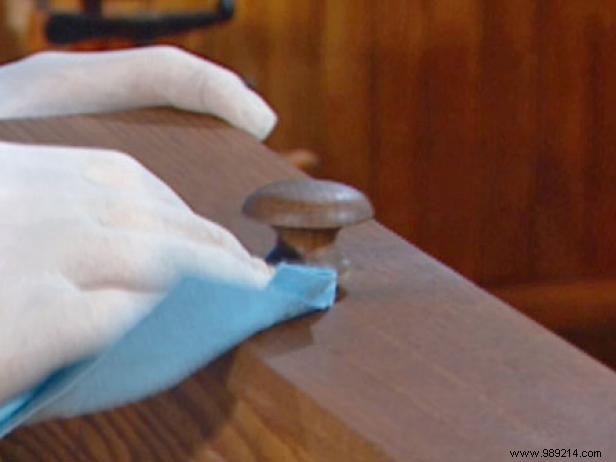
Depending on the state of deterioration, there are several options for rejuvenating a dull wood finish. For a dry, but not severely damaged finish, try applying a coat of regular paste wax.
Apply the paste wax with a soft cloth (Image 1) and rub it into the pores of the wood in a tight, circular motion. Paste wax is easy to apply and is an effective treatment as it can be worked deep into the wood. Once it penetrates the wood, it hardens to form a protective seal much like car wax.
After applying the wax and rubbing it into the wood, let it dry. After about five minutes, use a clean, dry rag to buff the finish. Rub in the direction of the grain (Image 2) to remove excess wax and create a low-gloss shine. This results in a subtle finish that is appropriate for an antique, rather than a glossy sheen.
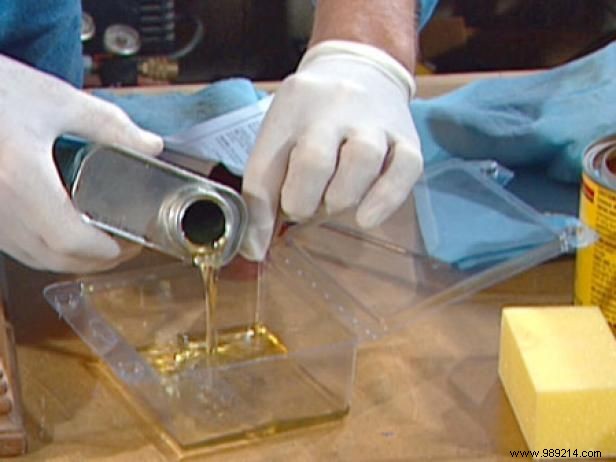
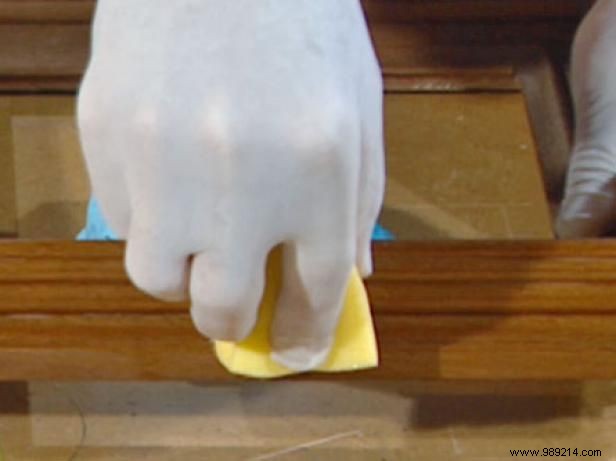
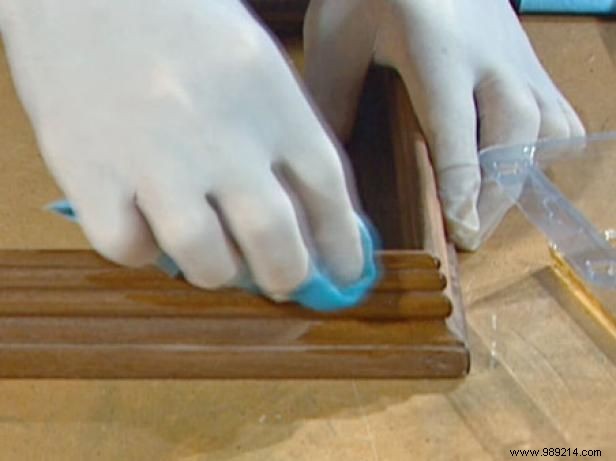
For a more advanced level of deterioration where the finish is very dry and lifeless, paste wax may not be enough to bring the wood back to life. In those cases, tung oil may be a better option. Tung oil is a thin-bodied oil (Image 1) that soaks into the wood grain well.
Make sure you have adequate ventilation when using tung oil or other oil-based finishes. Tung oil is best applied with a clean cloth or applicator. As the oil rubs into the surface (Image 2), it immediately adheres to the wood and soaks well into the pores.
An applicator pad can also be used to apply tung oil. Simply dip it into the oil, squeeze out the excess, and apply the oil to the wood (Image 3). Tung oil is very easy to control, but the job can get a bit messy, so limit this process to one work area, or lay down newspaper or another protective layer to make cleanup easier.
Let the tung oil soak into the wood for about five minutes before wiping off the excess with a clean rag. Allowing the oil to soak in for a few minutes ensures proper penetration and hardening within the pores. However, avoid leaving the puddle of oil and drying it completely on the surface of the wood, as this will result in a sticky mess.
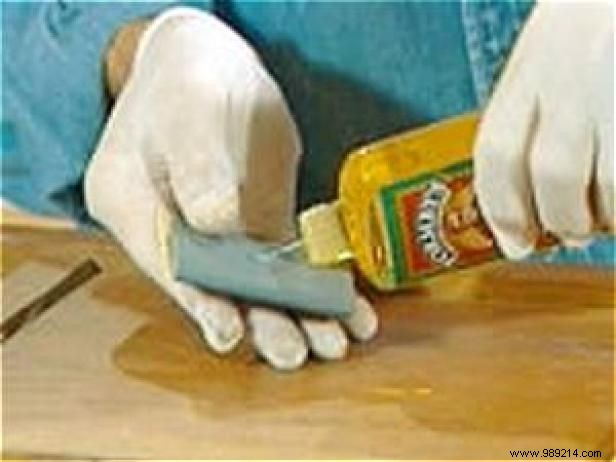
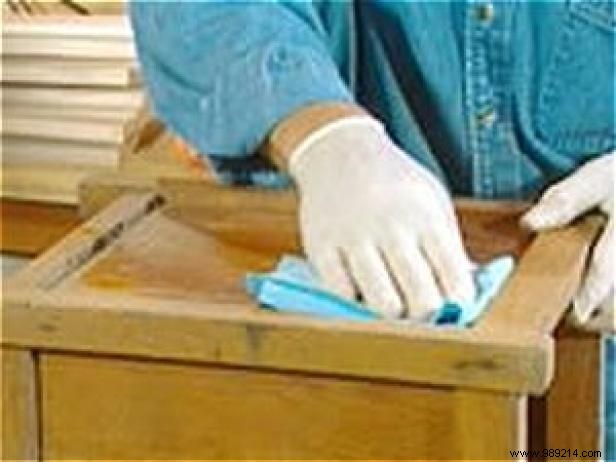
In the case of genuine antiques, it is always preferable to avoid removing or destroying the original finish. However, if the piece you are restoring has a finish that has been severely damaged, to the point that it has really become rough and dry, there is a rather dramatic measure that could be taken.
To smooth out the rough surface without destroying the original finish, consider using extremely fine sandpaper along with lemon oil. In our demonstration, 600 grit sandpaper was used. Since even one grit this fine can scratch the finish, it was used in conjunction with a little regular lemon oil. Apply lemon oil to the sandpaper (Image 1) and to the finish itself. The goal is to avoid sanding the wood, but to remove some of the dead finish.
Once the oil has been applied, use the lubricated sandpaper to lightly sand the top layer of finish (Image 2). This technique should result in a finish that is very smooth and brings the aged wood back to life.
Since the lemon oil is simply acting as a lubricant, wipe it off with a clean rag once you've finished sanding (Image 3). If done correctly, this is a surefire technique for restoring a badly damaged old finish while also helping to rejuvenate the wood.